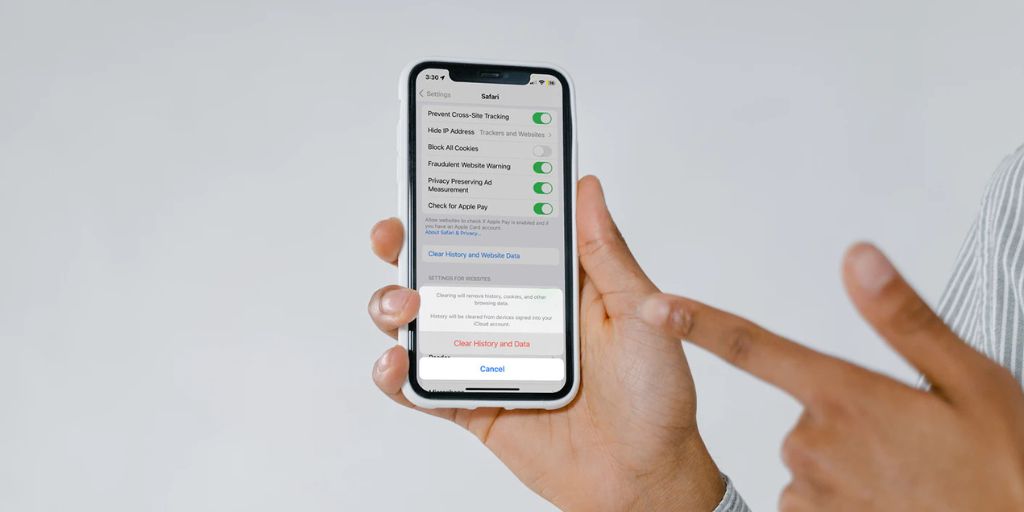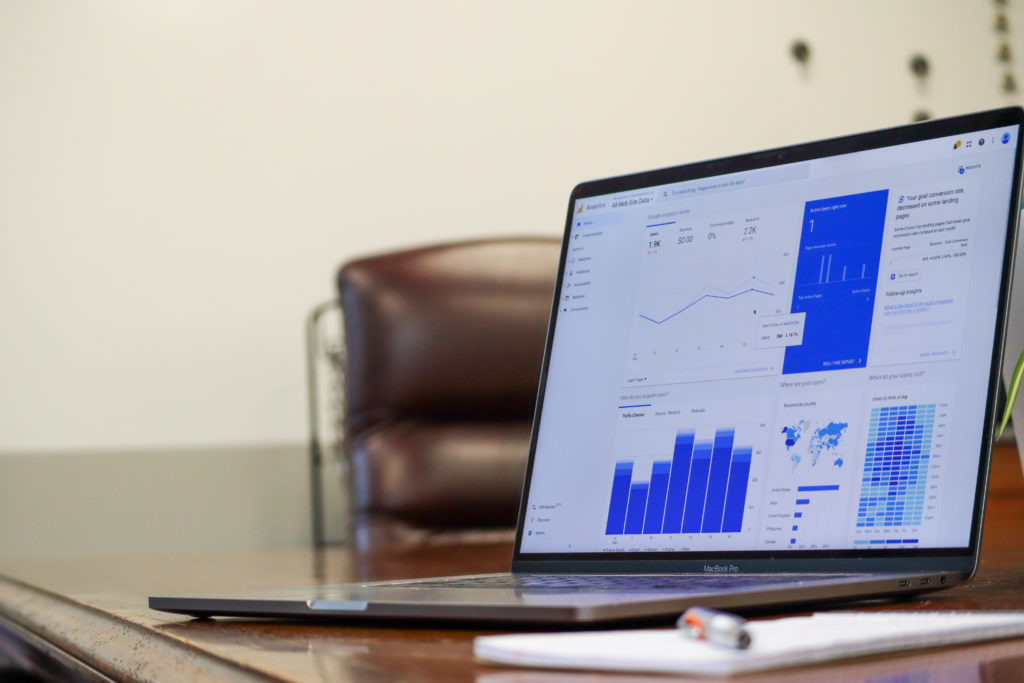
Google to Phase Out Third-Party Cookies in 2024: How to Prepare for a Cookieless Future
Table of Contents
There’s no question that the world of digital marketing and advertising is constantly evolving. New rules, best practices, and technologies are introduced all the time. But occasionally, significant changes must be reevaluated to ensure businesses and consumers get the best experience possible. And there’s no better example than Google’s plan to phase out third-party cookies, which has been postponed to 2024.
What’s the Latest on Google’s Plan to Phase Out Third-Party Cookies?
In case you missed it, Google first announced the removal of third-party cookies in Chrome in January 2020. The change was scheduled for this year, but the tech giant presented an updated timeline for its “Privacy Sandbox” initiative in June 2021, intending to end support by 2023. The latest news is that it will start to phase out third-party cookies in 2024.
Here’s why…
Google isn’t just doing away with third-party cookies. It’s replacing them with a new system of its own design—the Privacy Sandbox initiative. Developed in 2019, the Privacy Sandbox is being proposed as a less intrusive option. The ultimate goal is to protect user privacy better while still allowing for targeted advertising.
However, this is a major project with a major impact, and those involved don’t want to launch without ensuring it’s a viable solution for those who rely on cookies. That’s why the decision to push the date was made—to move at a more responsible pace and collect more feedback to improve the system. In fact, Anthony Chavez, the VP of Privacy Sandbox, made the following statement in a recent Google blog:
“The most consistent feedback we’ve received is the need for more time to evaluate and test the new Privacy Sandbox technologies before deprecating third-party cookies in Chrome…
This deliberate approach to transitioning from third-party cookies ensures that the web can continue to thrive, without relying on cross-site tracking identifiers or covert techniques like fingerprinting.”
The Privacy Sandbox timeline will be updated monthly.
What This Means for You
If you’ve been worried about Google’s plan to phase out third-party cookies, you may be breathing a sigh of relief. After all, now you have another two years to get used to the idea…right?
A word of caution: Although website owners and marketers have additional time to transition to a cookieless future, that doesn’t mean it’s wise to delay. It’s still unclear how the depreciation of third-party cookies and the introduction of Privacy Sandbox will affect tracking. And failing to develop a post-cookie strategy for tracking and measurement could leave you in a difficult position once those cookies are officially gone.
What Role Do Cookies Play?
Whenever a user visits a website for the first time, they’ll often encounter a pop-up window asking their permission to use cookies. Clicking “Agree” means the user consents to the collection and use of their data. But what does that mean?
Cookies Help Collect User Data
Cookies are bits of code that are placed on a user’s browser when they visit a website. This cookie typically contains two categories of information:
- Name of website
- A unique user ID
However, some cookies may be able to capture more information from a user’s browsing activity, which is why many websites give the option to personalize one’s cookie settings. For instance, cookies can capture key information such as items added to a shopping cart, language preferences, and so on.
Data Is Used for Personalized Ad Targeting
Advertisers can use the information captured from a cookie to understand consumer behaviors and preferences. That’s why roughly 83% of marketers are so reliant on third-party cookies. As you’d expect, cookies are a great opportunity for business owners like you. With them, you can craft a more personalized experience for your web users.
Have you ever seen an ad about something you were searching the web for on an unrelated website? You can thank the cookies for that!
In a survey from Statista, nearly 32% of respondents claimed that they accept all cookies when prompted.
But this is just scratching the surface, so to speak, in terms of examining what cookies do. To fully understand the impact of a cookieless future, we must drill into the different types of cookies that are currently in use.
What’s the Difference Between First, Second & Third-Party Cookies?
Cookies can be categorized into three types:
- First-party cookies
- Second-party cookies
- Third-party cookies
It’s important to point this out since Google is to phase out third-party cookies.
Let’s look at the differences between them…
First-Party Cookies
First-party cookies refer to the codes that are created and stored by the website owner or within the domain visited by the web user. Typically, website owners use cookies to collect visitor data to remember their preferences, for analytics, or to deliver a personalized web experience.
A perfect example of a site that uses first-party cookies is Amazon. The company relies on data collected by cookies to deliver a personalized shopping experience. Additionally, Amazon uses it to provide relevant product recommendations.
For website owners that employ this type of cookie, there’s good news! Google will not be phasing out first-party cookies.
Second-Party Cookies
Second-party cookies involve the buying or sharing of data collected from a “trusted partner.” The partner is responsible for collecting the data through the first party. This data is then sold or shared with another.
An example is when a user visits an airline’s website to book a flight. The airline company’s website cookies will collect the user’s data—such as the flight destination, flight date, and so on.
The airline website can then share that data with its partner—a hotel website, for example. Then, the hotel can use the collected data from the cookies to place personalized ads, such as discount hotel bookings at the user’s travel destination.
Google is not phasing out second-party cookies, either. That leaves the last type…
Third-Party Cookies
Third-party cookies collect data via a script. They are used to observe consumer behaviors and to serve relevant ads, even if users visit other sites across the web.
Let’s take Amazon as an example once again. If users go to Amazon to search for or shop for certain products, they will find similar ads for those products on other websites.
Simply put, this type of cookie is used for cross-site ad tracking. Advertisers use it to attain wider audience profiling or to deliver targeted advertising.
It’s the third-party cookies that Google aims to phase out in 2024 and replace with Privacy Sandbox.
What Challenges Does a Cookieless Future Present?
The pending implementation of a cookieless future gives rise to a whole new set of challenges for marketers and business owners. As mentioned previously, a large percentage of marketers rely on third-party cookies. And as of now, it’s unclear how Google’s Privacy Sandbox will compare.
With that in mind, let’s tackle the issues that will inevitably come up…
1) Personalization Will Be More Difficult
The primary motivation for using third-party cookies was to gather data that would be critical in offering personalization to web users.
So, without cookies, is personalization even possible?
That’s a valid concern, and it’s one that has marketers looking ahead into the cookieless future. With less data about user behaviors and preferences, it will certainly be difficult (although not impossible) to predict how users will interact with a certain website or domain.
2) Third-Party Audiences Will Diminish
Once the cookies expire following the phasing out of third-party cookies by Google, any information advertisers and marketers have about the audience will no longer be usable.
That means you must develop a new plan to generate prospects, especially when collecting data about your target audience.
But it’s not just collecting data that presents a challenge here. Aggregating data using other tools and methods will be more difficult as well.
3) Audience Targeting Will Be Unreliable
In a data-driven marketing landscape, you need data to be able to identify who your target audience is. Targeting is also integral in optimizing your use of resources to increase conversions.
In a cookieless future, marketers and business owners will need to work twice as hard to collect information to identify their audience.
Note that Google has introduced the concept of Federated Learning of Cohorts (FLoC) as part of its new initiative. This system will collect information about users’ browsing habits and put them in a group based on browsing history, demonstrating their interests to advertisers. However, it’s probably a safe assumption that targeting will still be unreliable compared to third-party cookies.
How to Adapt to a Cookieless Future

Google’s phasing out of third-party cookies will undoubtedly add even greater complexity to advertising for business owners. But that doesn’t mean you should panic. It just means you need to start introducing new methods and approaches that go beyond cookies into your marketing strategy.
Use Your Website’s Analytics
Most websites have their own analytics tools outside of cookies, and that’s where you should invest your time and effort moving forward.
Data compiled from your own sources can provide you with adequate insights to understand and predict user behavior. In fact, marketers in the US claim they are shifting their focus toward first-party data.
Collect Declared Data
This is one aspect of data collection that is often overlooked, but what is declared data? It’s data that is given freely by customers through direct interaction. Consumers are also more open to the idea of providing their data in exchange for a more personalized experience.
The use of AI chatbots is one of the best techniques you can employ to hedge the phasing out of third-party cookies. By engaging with your audience, you are forging trust and relationships. And when there is a relationship, they are more willing to provide their information to you since there’s a level of trust.
Amp Up Your Email Marketing
Email marketing is often swept under the rug among so many other marketing tactics. But it’s far from dead. In fact, research shows that email marketing has an ROI of $36 for every $1 spent. So, there’s no reason why business owners and marketers shouldn’t be investing their time and resources to improve and streamline their email marketing.
Email marketing allows you to nurture your customer relationships. Plus, it’s a very intimate form of communication. You can collect customer data through opt-ins. You can even segment your audience to deliver a more personalized experience for them.
Ensure Your First-Party Cookies Are Fully Compliant
You need to ramp up your consent management solutions when implementing first-party cookies.
There should be no grey areas. You need to define for your audience how their data is processed and the ways you are protecting them. Clear communication is one way you can establish their trust.
Use Second-Party Data
It might be high time for you to tap into tech leaders and publishers to get your hands on second-party data. As mentioned above, this type of cookie is underutilized but has very promising potential.
Google is a good example of this. The data collected is shared within their network of sites, including Google Display Network, Google Search, and YouTube.
Final Thoughts
Although Google isn’t set to phase out third-party cookies until 2024, that doesn’t mean you should wait to adopt new practices. After all, in a cookieless future, there will be hurdles to data collection and audience segmentation. And the best way to land on the other side is to prepare now.
This update is heralding new data-collection techniques that will be more compliant with existing data privacy laws to ensure that consumer data is protected. At the same time, it prompts business owners like you (as well as marketers) to implement pre-ad tech tactics that let you connect with your audience at a more human level.
Want some help with all of this? That’s what we’re here for. Start by requesting a FREE marketing audit today!

